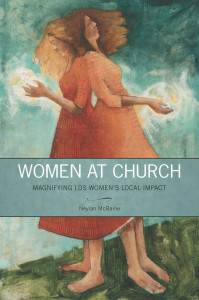 [This post originally appeared at Virtuous Society and is reposted here with the author’s permission.]
[This post originally appeared at Virtuous Society and is reposted here with the author’s permission.]
Written by Tom Stringham
Do young Latter-day Saints, and especially gay youth, commit suicide at a higher rate than other youth in the US? The short answer: with the data we have, we don’t know. So what do we know for sure? The Mormon teen suicide problem Some readers may have read a recent interview in the Huffington Post with Wendy Williams Montgomery, a Californian mom and LGBT advocate. In the interview, Montgomery refers to a widely recognized problem within Mormon culture: the high rate of suicides among gay youth. “Mormons,” Montgomery asserts, “have the highest rate of gay teen suicides in the country.”
Over the last few years, the idea that Mormons have a problem with teen suicide, especially among gay youth, has become common wisdom. In 2012, a Reuters article highlighted the issue of gay teen suicide in Utah. The Huffington Post has featured the issue multiple times, as in a 2012 post. High-profile Mormon critic John Dehlin frequently discusses gay teen suicide among Mormons, and recently referred to the phenomenon as epidemic. His characterization seems to fit the general impression: Mormons have a special problem with suicide among gay teens.
Missing data
There is no question that gay teen suicide is a reality among Mormon youth. In many cases, we have heard their stories, either through media or personal experience. Fortunately, we are more aware of this reality than we were in the past. Unfortunately, however, these stories seem to be accompanied, more and more frequently, by statistical claims that are not supported by data. Ms. Montgomery’s assertion that Mormons have the highest gay teen suicide rate in the country is unsourced in the original interview, and other blogs and outlets making similar claims are also missing sources. I surveyed all the government and health data I could find on youth suicide in the United States, and was unable to find any agency that collects public data by religion or sexual orientation (data so specific would be very difficult to collect). In fact, the American Association of Suicidology’s LGBT Resource Sheet notes, “to date, there is no empirical data regarding the number of completed suicides within the LGBT community.” The claim appears to be fabricated.
Other claims to the effect that Mormons, or Utahns, have a unique or unusually acute problem with gay teen suicide, or even teen suicide, cannot be supported by any data I can find.
The data we do have
Much of the interest in Mormons and teen suicide seems to originate from a 2006 article in the Deseret News, a newspaper owned by The Church of Jesus Christ of Latter-day Saints. The article pointed out a few statistics about suicide that would have been surprising to most readers at the time. First, that Utah had the highest rate of suicide among males age 15-24. Second, that Utah had the 11th highest overall suicide rate in the United States. And third, that the youth suicide rate in Utah had tripled over the preceding half-century (in fact, this is true across the United States). The newspaper didn’t cite its sources, but all of the categories of statistics they refer to are available through the CDC and other federal sources and appear to be genuine.
What else do we know? The data in that report is now nine years old, so it’s worth taking stock of the current reality. I’ve collected a set of more recent figures below, from public data and representative surveys:
A collection of more recent statistics is below:
- Utah’s suicide rate among people age 15-24 is 9th highest in the United States, among 47 states with reliable data (CDC, 2013)
- Utah’s suicide rate among males age 15-24 is 7th highest, among 46 states with reliable data (CDC, 2013)
- Utah’s suicide rate among females age 15-24 cannot be reported as the number of cases is smaller than 20 (CDC, 2013)
- Utah’s overall suicide rate is 5th highest in the United States (CDC, 2013)
- Utah is 29th out of 40 states with available data for the rate of high school students who have attempted suicide (not completed suicide) (CDC, 2013)
- Suicide is the second leading cause of death for Utahns age 10-17. (Utah Department of Health, 2012)
- Across 9 sites surveyed (all in the Midwestern or Eastern US and California), lesbian and gay high school students had a rate of attempted suicide that was approximately 4 times higher than for straight students (CDC, 2011)
- A representative survey of students in Grades 7-12 across the US using the Add-Health database found that Mormon gay teens reported significantly less depression and fewer suicidal thoughts than their nonreligious peers. (Add-Health, 2010)
- The same survey found that religious gay teens had a lower attempted suicide rate than nonreligious gay teens (the number of cases did not allow for statistical significance, however).
To the best of my knowledge, these statistics are the closest we can come to answering the statistical questions surrounding gay teen suicide among Mormons, or within Utah. Specifically targeted data on completed or attempted suicide among gay Mormon teens simply isn’t available. The data speak well enough for themselves, but it’s worth pointing out that none of the relevant data points appear to justify an unusual suspicion about Utah (or, by extension, Mormons). This is especially true since the surprisingly strong link between high altitude and suicide rates has become well established. Among high-altitude states in the Rocky Mountain West, Utah appears to have overall rates within the average range, and youth rates slightly lower than the average. We have no empirical data specific to Utah for gay and lesbian youth, but we can assume that like other states, the rate of attempted suicide, and presumably completed suicide, is considerably higher than for straight youth.
It’s also worth noting that Utah’s overall suicide rate has increased relative to other states since 2006, while its youth suicide rate has fallen in comparison to other states. Furthermore, the Add- Health dataset mentioned above suggests that Mormon gay youth are relatively less at risk for suicide than nonreligious gay youth.
Conclusions
While only systematic recordkeeping and representative surveys can answer the questions we’re most interested in, we shouldn’t ignore anecdotal evidence about suicide. The sense among many concerned observers in Utah and elsewhere that the situation is bad and getting worse probably reflects an important reality. Youth suicide in the US has quickly gotten worse over the decades, and a disproportionate number of these suicides across the US, including within Utah, are among gay youth. Combined, these two trends might be giving an alarming impression to those concerned about the well-being of gay teens; an impression made locally that could be transformed into misplaced claims, such as Ms. Montgomery’s. So her hypothesis–that Mormons in particular have an unusually severe problem with gay teen suicide—could possibly be an observer’s local interpretation of nationwide trends, but it cannot be supported or rejected by the data itself, as far as I can tell.
The hypothesis cannot be confirmed or rejected by theory, either. Many advocates who highlight the issue of suicide among Mormons do so within the framework of a particular narrative, at the center of which is the idea that Latter-day Saint sexual values are harmful. Since there is no data to support the assertion of abnormal suicide rates, the theory seems to be doing all the work. But there are other theories that could be put forth—Latter-day Saints could just as well hypothesize that robust Mormon families and supportive faith communities lead to lower rates of suicide among gay youth. But this would also be unjustified; it would be best for everyone to refrain from attempting to explain phenomena for which there isn’t evidence in the first place.
Those who believe in Latter-day Saint sexual values and those who do not should be able to agree: one youth suicide is too many, including among gay youth. Even if the Mormon problem is not unique, it is still a problem. We don’t need statistics, and certainly not unsourced statistics, to tell us this.
[For further reading on this topic, please visit this link.]








